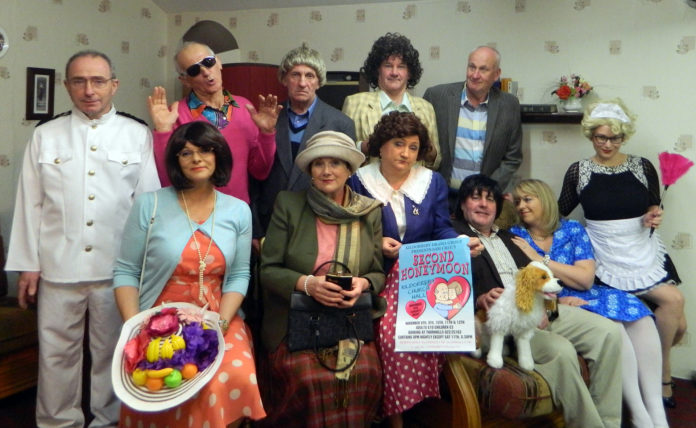
Have you ever had a play decided upon and practically ready to start into rehearsals with when, and then, for some reason or another, it’s put on the back burner?
Well one of the plays I had started to cast for in 2016 for the 2017 full length festival circuit that I was really excited about, was Thomas Kilroys adaptation, ’Six Characters in Search of an Author’ from the play by Italian author, Luigi Pirandello (1921). However, for me, a health scare put it on hold and therefore ‘on the long finger’.
This is a unique kind of ‘a play within a play’ that involves some film work (which could possibly be optional) and a large cast of 15 (7m/8f).
The play starts with an empty stage and a number of actors come on for what is a rehearsal of Pirandello’s ‘Mixing it Up’, being put through their paces by ‘the manager’. But then, these ‘six characters’ come on.
They are not ordinary people but are the characters of a play that has not yet been written. They are trapped inside a traumatic event from which they long to escape and are desperately seeking an author to complete their story and release them.
Intrigued by their situation, the director and his company of actors listen as the characters begin to describe and argue over the key events of their lives.
The ‘father’ of the visitors, explains that as their author unjustly denied them stage-life and its immortality, they bring their drama to the company.
As their story unfolds through a deal of arguing and disagreement, we realise something has happened between the suductive ‘step-daughter’ and ‘father’. She cannot bear to witness her widowed ‘mother’ and her anguish for her legitimate ‘son’.
Confused, the manager asks for the situation and wonders how a mother can be a widow if the father is alive.
The step-daughter explains that the mother who had taken a lover, herself, the child and boy’s father—died two months ago. The ‘father proper’ once had a clerk who befriended ‘mother’ and, seeing the mutual appeal in their eyes, he sent her off with him and took her son.
As soon as the clerk died, the family fell into poverty and, unbeknownst to ‘father’, returned to town where ‘step-daughter’ became a prostitute for Madame Pace and ‘father’ becomes her unsuspecting client.
What transpires in twists and turns of play and inter-play between the local group and the visitors, is an intriguing drama as ‘manager’ decides to run with the idea before him. Some make-shift props are brought on in the first act at the visitors’ request and the 2nd act opens to some new scenery that includes a few trees and a fountain that is very relevant to the visitors’ story.
If it all sounds a bit confusing, that may be down to me not describing it more clearly or simply because within the play there is make believe and pretence – so ye, it is confusing, but all part of the challenge.
‘Callaghan’s Place’
Now here’s one we did get to do and is one that did very well for us – it’s a play called ‘Callaghan’s Place’ by John McDwyer – a Sligo playwright. We also followed up with another of his plays ‘Unforgiven’, which Kilworth Dramatic Society also staged more recently.
In ‘Callaghan’s Place’, we meet Paul and Mary Dolan who struggle to come to terms with the departure of their only child to study at university. A mysterious Englishman Thomas Hopkinson arrives in their midst and his blossoming friendship with the daughter creates tension and tragedy as neighbours Pat Kelly and Annie Jackson fail to stem the tide of Paul’s anger and suspicion.
While the play has multiple settings (Jackson’s Bar, Dolan’s kitchen and the Englishman’s kitchen), it is manageable with a bit of imagination. It has a cast of seven (4m/3f).
For all the seriousness of the underlying themes in the play, ‘Callaghan’s Place’ ihas many scenes of outrageous humour.







